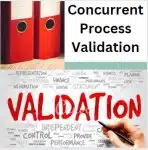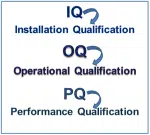A Validation Report is a comprehensive document that summarizes the results of validation activities, confirming that a process, system, or equipment consistently performs according to predefined specifications. It serves as evidence of compliance with regulatory requirements and ensures that the validated item is suitable for its intended purpose.
Table of Contents
Below are the typical contents of a Validation Report for pharmaceutical manufacturing, following Good Manufacturing Practices (GMP) guidelines:
1. Title Page
Title: Clearly state the type of validation (e.g., “Process Validation Report,” “Equipment Validation Report”).
Document Number: A unique identification number for traceability.
Product or System Name: Identify the equipment, process, or system being validated.
Site and Location: Indicate the facility or site where the validation took place.
Date of Report Completion: Provide the date when the validation report is finalized.
Prepared By: Names and signatures of individuals responsible for preparing the report.
Approved By: Signatures of the authorized personnel (e.g., Quality Assurance, Production Manager, Validation Lead).
2. Table of Contents
A clear and structured table of contents outlining each section and its page number for easy navigation.
3. Objective
Purpose of the Validation: State the objective of the validation (e.g., to confirm that a process consistently produces a product meeting pre-defined specifications).
Scope of the Validation: Define the boundaries of the validation activity, such as the specific equipment, processes, or systems included.
4. Summary of Validation
Summary of Results: A concise overview of the validation results, including whether the validation met acceptance criteria.
Conclusion: Indicate if the validation was successful or if revalidation or corrective actions are required.
5. Introduction
Background Information: Provide context for the validation, including references to previous validation activities (if applicable) and reasons for performing the validation (e.g., new equipment, changes to processes).
6. Validation Approach and Strategy
Type of Validation: Define the type of validation being performed, such as:
Installation Qualification (IQ)
Operational Qualification (OQ)
Performance Qualification (PQ)
Process Validation
Cleaning Validation
Method Validation
Validation Methodology: Outline the general approach used in the validation, whether prospective, concurrent, or retrospective validation.
7. Equipment/Process Description
Description of Equipment or Process: Provide details about the system or process being validated, including:
Equipment ID
Model/Type
Manufacturer
System components and process flow diagrams (if applicable)
Critical Parameters: List key parameters that must be controlled or monitored during the validation (e.g., temperature, pressure, speed).
8. Acceptance Criteria
Predefined Criteria: List the acceptance criteria established prior to the validation activity, which should have been outlined in the validation protocol.
Rationale for Criteria: Explain how the criteria were determined, often based on regulatory guidelines, product specifications, or prior performance data.
9. Protocol Reference
Validation Protocol Reference: Provide a reference to the specific validation protocol (IQ, OQ, PQ, etc.) that was followed during the validation activity.
Protocol Approval: Include a reference to the approval date of the protocol and the personnel who authorized it.
10. Test Results
Test Execution Summary: Summarize the results of each test performed during the validation activity, organized by the type of validation (IQ/OQ/PQ).
Detailed Test Results: Include tables or graphs to present the detailed test results, including:
Test parameters (e.g., temperature, pressure, speed)
Measurements taken
Observed values
Pass/fail status for each test against the acceptance criteria.
11. Deviations and Non-Conformances
Description of Deviations: List any deviations or anomalies that occurred during the validation process, including:
The nature of the deviation (e.g., failure to meet acceptance criteria, operational issues).
Investigation results and root cause analysis.
Impact Assessment: Evaluate the impact of each deviation on product quality or system performance.
Corrective and Preventive Actions (CAPA): Summarize any CAPAs implemented to address deviations or non-conformances.
12. Revalidation Requirements
Conditions for Revalidation: Specify if revalidation is required based on the results or changes in the system/process (e.g., after maintenance, major changes, or deviations).
Revalidation Schedule: Provide a timeframe for any required revalidation.
13. Summary/Conclusion
Summary of Findings: Recap the main results of the validation process, confirming whether the system, process, or equipment met all acceptance criteria.
Validation Outcome: State whether the validation was successful or if additional actions are required.
Suitability for Use: Conclude if the system or process is fit for its intended purpose based on the validation results.
14. Recommendations (if applicable)
Additional Testing: Recommend any further testing or improvements if issues were identified during the validation.
Future Monitoring: Propose recommendations for ongoing monitoring or control measures.
15. Annexures
Raw Data and Test Records: Include all raw data collected during the validation, such as calibration records, data printouts, charts, and logbooks.
Equipment Calibration Certificates: Provide calibration certificates for equipment used during validation (e.g., thermometers, pressure gauges).
Photos or Diagrams: Include any relevant photos or diagrams used in the validation process.
Validation Protocol: Attach the original validation protocol or a reference to the document.
Personnel Training Records: Include records of personnel training, if applicable.
16. Approval Signatures
Final Approval: Signatures of the individuals responsible for approving the validation report, typically from:
Quality Assurance (QA)
Validation Department
Production/Engineering Department
Regulatory Affairs (if required)
Conclusion
The Validation Report is a key document that provides proof that equipment, processes, or systems are performing as expected and meet the necessary regulatory and quality standards. The report must be comprehensive, detailing every step of the validation process and providing transparent and traceable evidence of the results. All deviations, non-conformances, and corrective actions should be thoroughly documented to ensure continuous improvement and compliance.

Abdus Sobhan Salim is professional experienced pharmacist in pharmaceuticals, author and founder of pharmabossbd.com, the first Bangladeshi pharmaceutical blogger since 2019.



